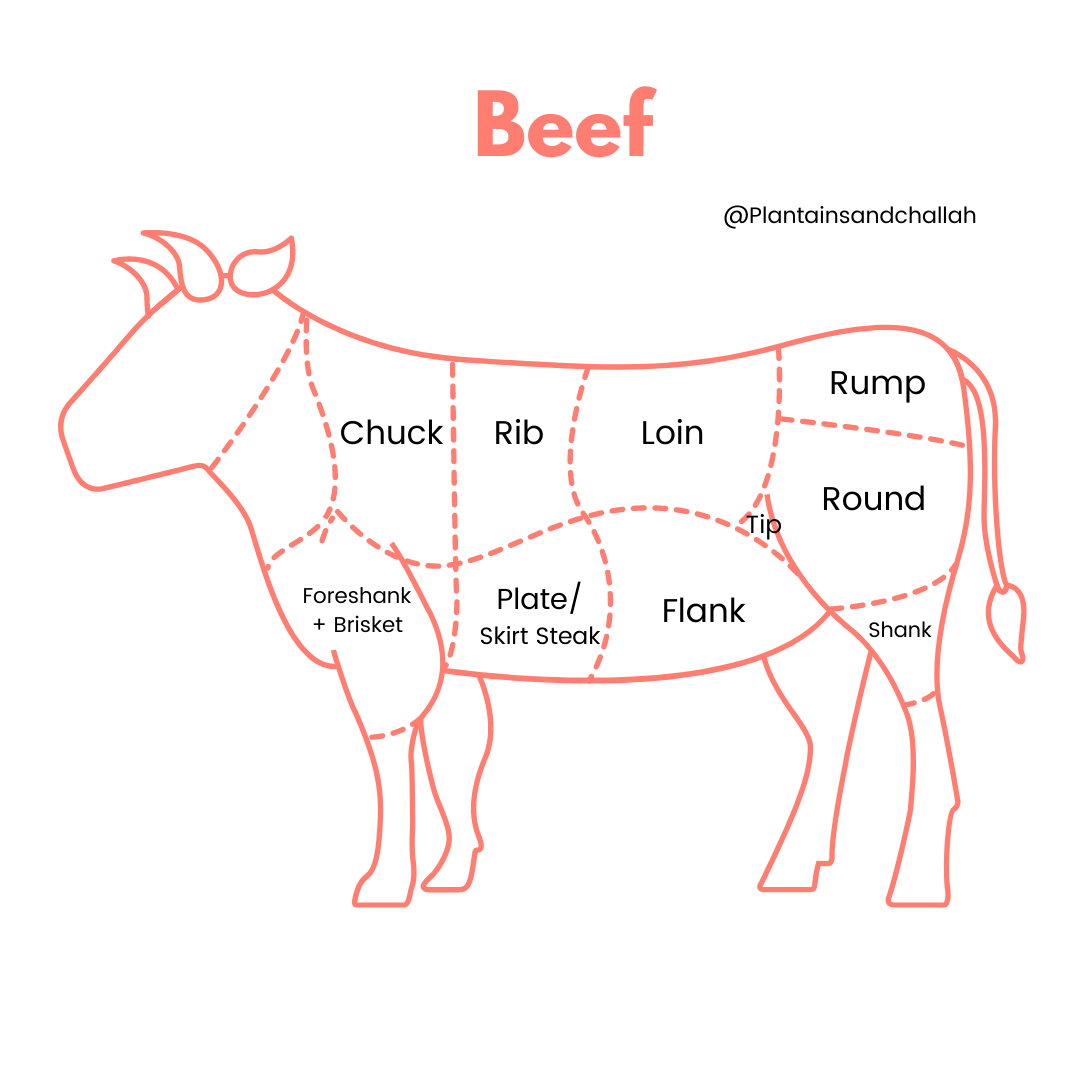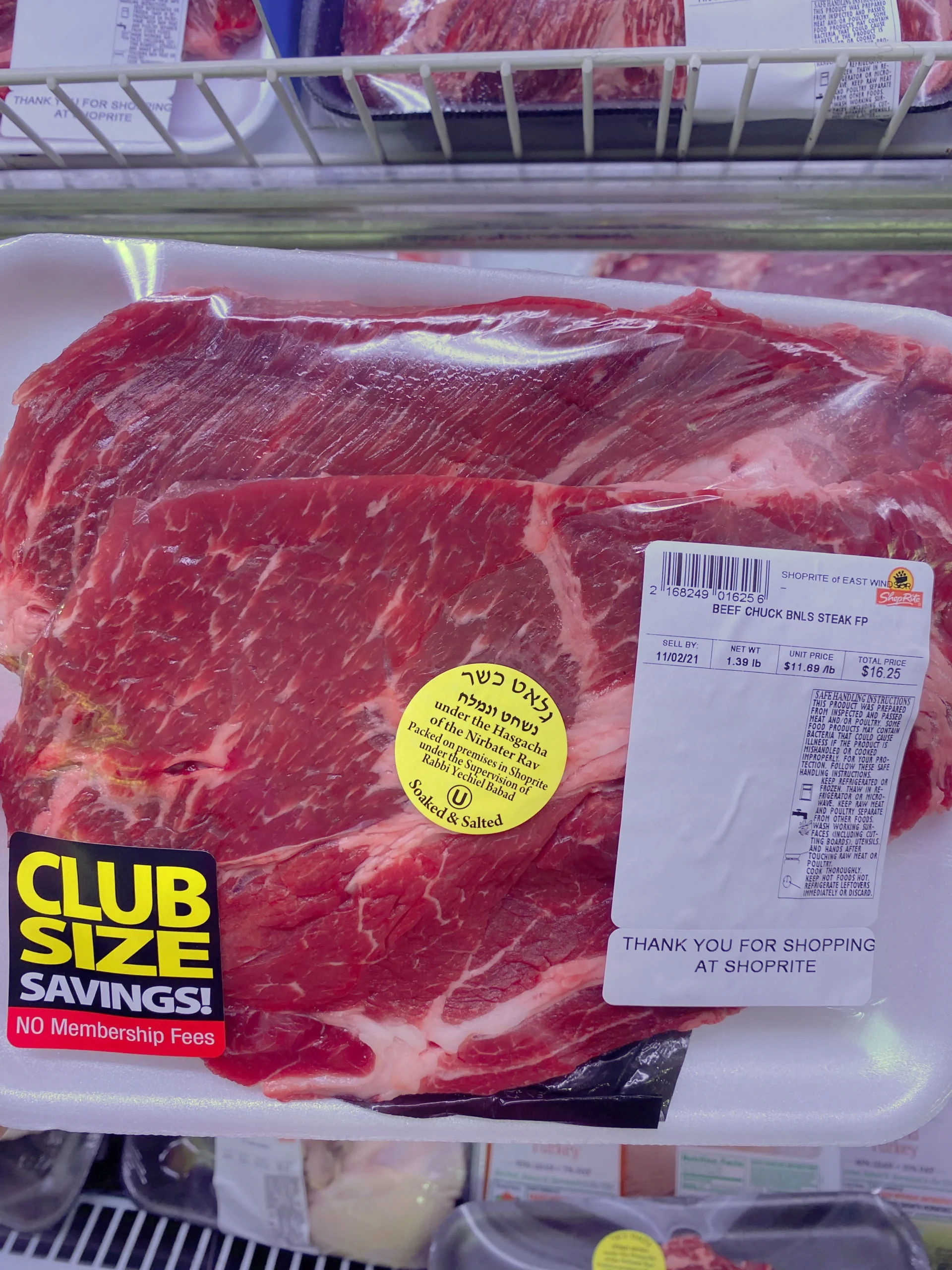
When it comes to buying beef, a lot of times, the names you see on the package are actually cooking preparations: “London Broil”, “Minute Steak” or even “Beef Stew”.
You need to know what cut of beef it is; what part of the animal it is from in order to determine what cooking method to use.
Meat should have good color and appear moist and shiny. Packages should be free from any punctures and not have any unpleasant odors.
As a general rule,
the more exercised the muscles are, they need “low and slow” cooking (Moist or combination cooking methods) to break down the muscle tissue.
Tender cuts are usually cooked by dry cooking methods.
Chuck – This is some of most exercised muscles. Anything from the shoulder area will generally need long, slow cooking to bring out flavor and make it seem less tough. However, the photo show below is from the chuck, but because of a good amount of marbled fat, I was able to sear it in a hot pan and still enjoy it cut against the grain. This means, pay attention to how much marbeling you see.
Brisket– You can find this fresh, or as “corned beef”. (That’s just brisket with pickling spices, brined and boiled) and does really well as a braise.
Rib– This area is not exercised as much, so the cuts are tender. They have as many of the most sought after cuts of roasts and steaks such as ribeye. Dry Cooking methods
Loin– Another area where the cuts are tender and sought after. Fillet mignon is a popular one from here. Dry cooking methods.
Flank– Has enough intramuscular fat so the cut can stay tender with a dry cooking method, but cannot be overcooked and like most proteins, needs to be cut against the grain.
Rump + Round – Cuts from this area are best braised or stewed but can be used for some roasting if done properly.
Shank- foreshanank and hindshank are mainly used for braising and stews. Osso buco comes from here.

A Word About Kosher Meats
Kosher meats are checked for health in great detail, slaughtered in a very specific manner to cause minimum pain and then bled, soaked and salted.
In North America, only beef and veal forequarters are Kosher. To learn more, here is a very interesting article.